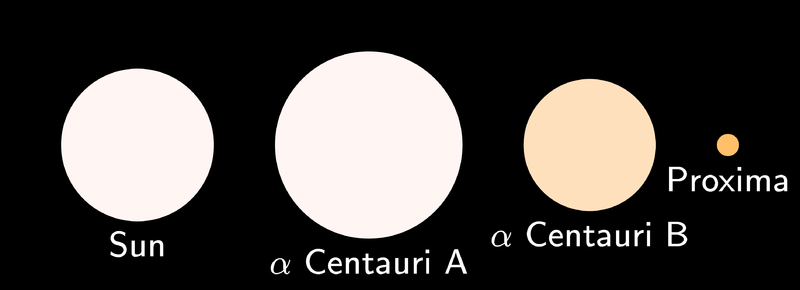
Artist’s Depiction (L Calcada/AP)
Scientists at the La Silla Observatory, Chile, have discovered that the Alpha Centauri star system has a planet. That’s right, planets are common enough in the universe that there’s one orbiting our nearest neighbor, just 4.3 light years away.
This is the smallest planet we have ever discovered orbiting a star comparable to the sun. It shoots around its star in just 3.2 days. Before you get too excited, the planet is only 6 million kilometers away from the star, even closer than Mercury is to our sun. The possibility of life on the planet is very slim.
That said, this suggests that planets are even more common in the universe than previously suspected. This discovery, combined with discoveries of other similarly sized planets, suggests that most planets in this range orbit stars similar to our sun.
The researchers have not ruled out the possibility that other planets are orbiting the star as well.
The Alpha Centaur system appears as one of the brightest stars in the Southern hemisphere, but it is actually a triple star system. Scientists have speculated about planets orbiting the system, but this is the first time they have ever been observed.
The planet was discovered by measuring its gravitational impact on the star, causing it to wobble back and forth as the planet orbits it. What’s truly amazing about this is how small the wobble is. The planet’s gravity causes the star to move just 51 centimeters per second, roughly a mile per hour. The fact that they were able to measure this is amazing.
(For those who are unaware, the wobble is detected by measuring the star’s redshift. When objects move away from us, the light turns slightly redder, similar to the way that a train’s horn sounds deeper as it moves away from us. Objects moving toward us turn slightly bluer. By measuring these changes in color they can detect the wobble of the star.)
The planet orbits Alpha Centauri B, which is slightly smaller than the sun, but in the same class. Alpha Centauri A is hundreds of times farther away, but would still be a very bright object in the sky.
Related:
Strange New Worlds: the Search for Alien Planets and Life Beyond Our Solar System
Could the Raman Shift Cool Material With Light?

